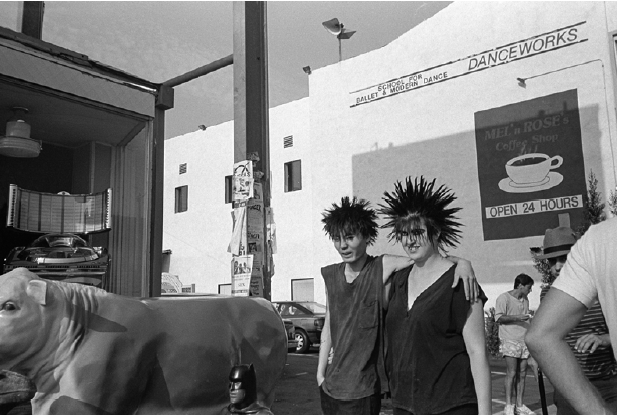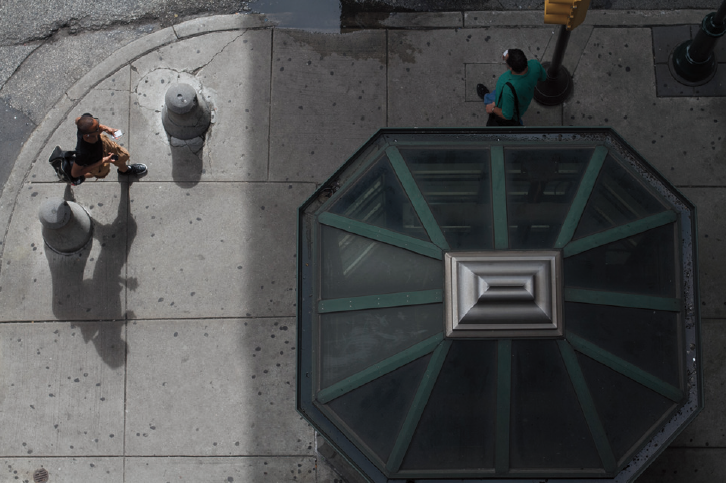
Answer: A Magic Moment
A mistake that novice street photographers often make is to assume that photographing an interesting subject will result in a great photograph. Although it certainly helps to photograph a fascinating person, place, or thing, it’s how you photograph the subject that makes the photo interesting, not the subject itself. In fact, in street photography, more often than not it’s the moment you capture that becomes the true subject of your photograph.
Here’s an example: As you’re walking down the street, you notice an old man sitting on a bench, feeding pigeons. You could photograph this scene in a straightforward way and all you’d have is a sentimental photo we’ve all seen many times before. Instead, you position yourself, wait, and observe. A pigeon lands on the man’s head. You take a photo. Another pigeon lands on the man’s knee. You take another photo. Both shots are better than the first, but still nothing special. Suddenly, a boisterous child causes the pigeons to take flight. Now, instead of a few clichéd images of a man feeding pigeons, you have a photo of a man who appears swarmed by a dense flock of ravenous birds. The physical objects in your photo are the same. What has changed is how they are positioned relative to each other and when you decided to release the shutter. In other words, it’s a different moment. In a situation such as this, the moment is the true subject of your photograph.
This is just one example. The moment in question could just as easily be a gesture—or many people gesturing. It could be a particular facial expression, or someone caught in the middle of some action. Henri Cartier-Bresson defined his famous phrase, “the decisive moment,” as “the simultaneous recognition, in a fraction of a second, of the significance of an event as well as the precise organization of forms which gives that event its proper expression.” In other words, “the decisive moment” is all about knowing the best moment to release the shutter.
The moment can be one that evokes any number of reactions, from laughter to sadness, from mystery to insight, from empathy to disdain. The reaction you get may not be the one you intended, but if the moment you choose engages a viewer, you’ve separated that image from the countless images that make our eyes glaze over.
No one can tell you when that moment is. Sometimes it’s when the light or composition is just right; other times it’s an interesting expression or gesture. Sometimes you’ll release the shutter too soon, other times too late; but when you’ve captured a magic moment, you’ll know—and so will the people who view and admire the resulting photograph.

I leaned over the railing of a parking structure and saw this kiosk below. Nothing looked particularly promising about it until this gentleman passed by with the perfect position, stride, and shadow.
This article was taken from Street Photography by Gordon Lewis.
